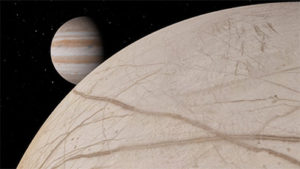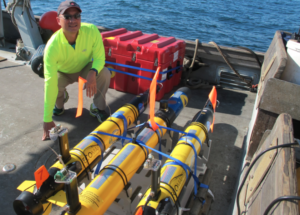
NASA Tests AI For Autonomous Exploration

(Nostalgia for Infinity/Shutterstock)
NASA’s Jet Propulsion Laboratory (JPL) is testing artificial intelligence technologies in underwater drones with the long-term goal of autonomous planetary research and data gathering on Europa, an icy moon of Jupiter.
JPL’s Artificial Intelligence Group initiated testing last fall in Monterey Bay, Calif., with the goal of someday launching underwater drones that could use AI to chart a course under the ice of Europa. The icy moon is one of 53 known satellites circling Jupiter, and is seen by many experts as one of the most likely places in the outer solar system that could harbor life.
The JPL researchers have launched a fleet of six submersibles in Monterey Bay that plot their own routes seeking changes in ocean temperature and salinity. Operators aid the submersibles by sending data about ocean features. “A major goal for the research team is to develop artificial intelligence that seamlessly integrates both kinds of data,” JPL said.
“In order to study unpredictable ocean phenomena, we need to develop submersibles that can navigate and make decisions on their own, and in real-time,” added Steve Chien, who heads JPL’s Artificial Intelligence Group. “Doing so would help us understand our own oceans—and maybe those on other planets.”
Autonomous probes under Europa’s ice cap remain years away, giving researchers from JPL and prestigious research organizations such as Woods Hole Oceanographic Institute in Massachusetts more time to perfect AI techniques. Among the early applications are using machine learning to help underwater drones plot their course based on what they detect in the waters around them.
Among the possible advances would be changes in the way underwater data is collected and used to develop autonomous operations. “Our goal is to remove the human effort from the day-to-day piloting of these robots and focus that time on analyzing the data collected,” explained Andrew Thompson, and assistant professor of environmental science and engineering at JPL host Caltech. “We want to give these submersibles the freedom and ability to collect useful information without putting a hand in to correct them.”
The National Oceanic and Atmospheric Administration has already deployed a network of autonomous weather buoys to collect ocean and meteorological data. The JPL project seeks to take the technology a step—and perhaps worlds—further by leveraging AI so drones can navigate independently.
The drone tests at Monterey Bay should provide at least a taste of the data gathering challenges autonomous vehicles might encounter in an extremely hostile environment such as Europa. “Bringing JPL’s exploration and AI experience to this problem should allow us to lay the groundwork for carrying out similar activities in more challenging regions, like Earth’s polar regions and even oceans on other planets,” Thompson added.
The fleet of six drones is scheduled for a second deployment at Monterey Bay this spring as NASA attempts to perfect AI-based technology that could one day be used to explore the solar system.
Recent items:
NASA Helps Launch Data Science Grad Program
Ford Accelerates Driverless Car Effort With Machine Learning




























